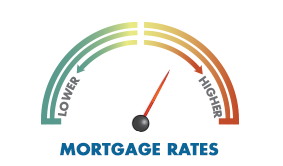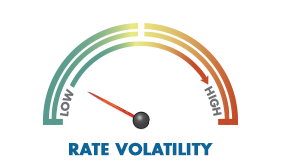Please enjoy this quick update on what’s happening this week in the housing and financial markets.



Mary decided to trim her household budget wherever possible. Instead of having her dress dry-cleaned, she washed it by hand.
Proud of her savings, she boasted to her husband, "Just think, Tom, we are five dollars richer because I washed this dress by hand."
"Good," Tom said. "Quick, wash it again!"

Rate movements and volatility are based on published, aggregate national averages and measured from the previous to the most recent midweek daily reporting period. These rate trends can differ from our own and are subject to change at any time.
|
Friday, August 08, 2014
Mortgage Market Update Week Ending August 8, 2014
Can You Afford a Home If Mortgage Rates Jump By 1 Percentage Point? Here’s the Answer.
Interest rates are likely to rise steadily into next year, and a full percentage point increase is not out of the question.
The real estate site Zillow did some research to answer the question: Can you afford to wait and buy a home if rates go up by a percentage point?
Zillow applied next year’s forecast home values and a 1 percentage point interest rate increase to the median home price in 35 U.S. metro areas. Zillow then calculated the difference in mortgage payments. The results for some areas are striking.
Of course, the higher the home prices, the bigger the monthly payment jump. For example, in San Francisco, a percentage point increase means $556 more a month.
“More often than not, buyers do not understand the profound effect of rising interest rates on affordability,” said Erin Lantz, vice president of mortgages at Zillow. “Many buyers associate a 1 percentage point interest rate change with a 1 percent change on a piece of clothing or the price of a car, when in fact they are very different.”
As a rule of thumb, a 1 percentage point increase in mortgage rates reduces affordability by 10 percent.
See the graphic below for the results:
Don't wait to buy a home and get priced out of the market. We have loan programs for just about every buyer and every need.
Contact us today 702-326-7866
info@aundreabeach.com
www.iLendLasVegas.com
Tuesday, August 05, 2014
Mortgage Market Update Week Ending August 1, 2014
Week Ending 8-1-14
Please enjoy this quick update on what’s happening this week in the housing and financial markets.
 |  |
|---|

 | The Fed says it will not raise policy rates until a "considerable time" after ending the taper in October. Housing and some labor indicators still cause concern. |
|---|
 | Second quarter GDP surprised with a 4.0% gain, more than making up for the first quarter drop. Rates jumped to their high for the month. |
|---|
 | Consumer confidence is at a 7-year high, possibly inspired by higher employment and low inflation. If the economy improves, rates will likely go up. |
|---|

 | June's pending home sales were healthy but down slightly. The three previous months saw increases. Pending sales are still above normal. |
|---|
 | May's home prices rose over last month and last year. Case-Schiller's survey found a seasonally adjusted decline in prices, possibly impacted by foreclosures. |
|---|
 | Homeownership rates have hit a 19-year low. The resulting rental demand has driven residential rental vacancies to long-term lows too. |
|---|

I have all the money I'll ever need...if I die by 4 p.m. tomorrow.

Rate movements and volatility are based on published, aggregate national averages and measured from the previous to the most recent midweek daily reporting period. These rate trends can differ from our own and are subject to change at any time.

Subscribe to:
Comments (Atom)





